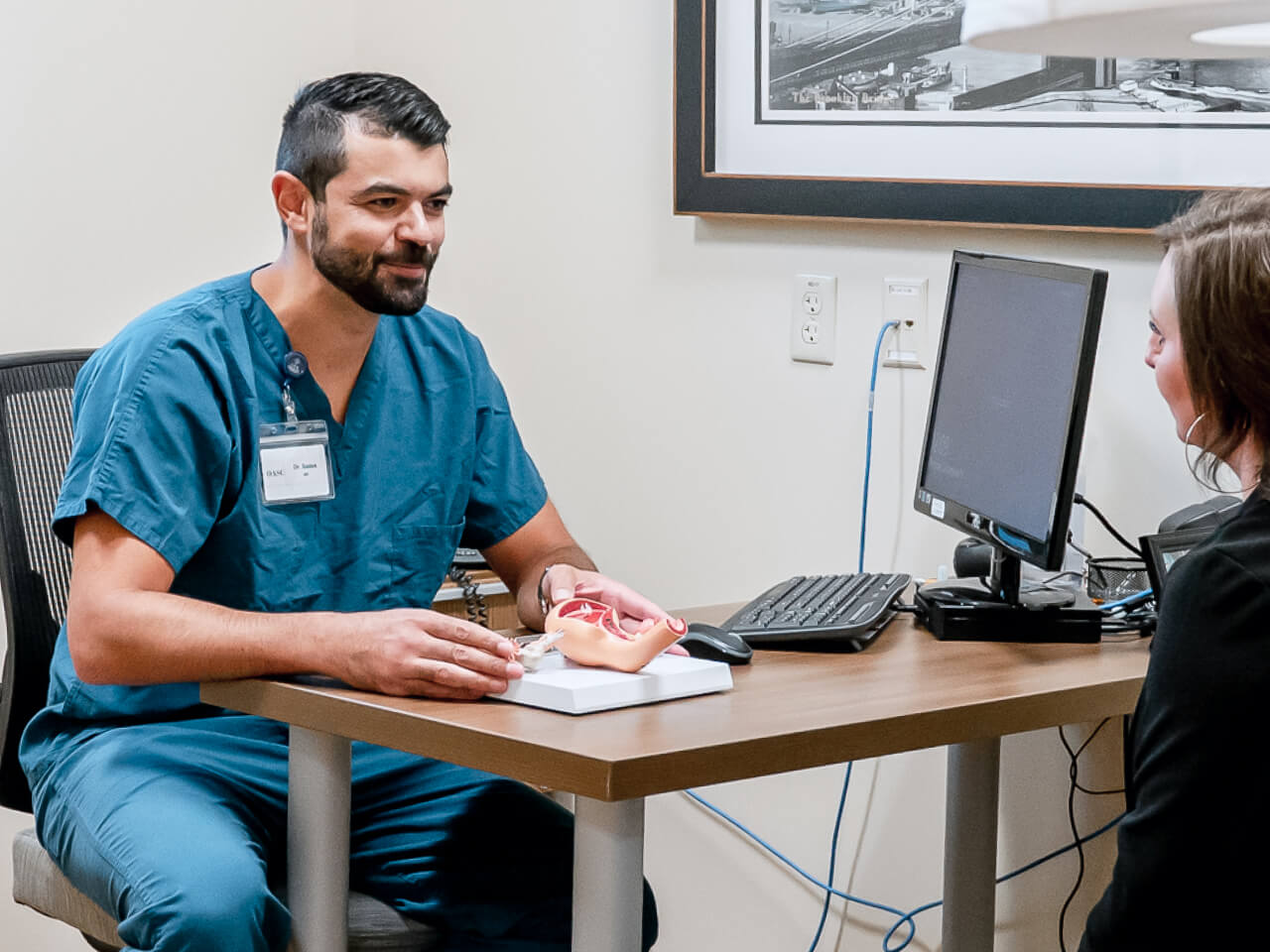Micromanipulation at the Center for Reproductive Medicine
Micromanipulation refers to procedures which are performed using microscopic instruments to manipulate eggs, sperm and embryos in an effort to improve the chances of a successful in vitro fertilization (IVF) cycle. At the Center for Reproductive Medicine, these procedures include intracytoplasmic sperm injection, preimplantation genetic diagnosis testing and assisted hatching, and are performed in our state-of-the-art laboratory facilities by our highly qualified team of embryologists.
Intracytoplasmic sperm injection
Since early 1995, intracytoplasmic sperm injection (ICSI) has been a standard practice at our central Florida fertility center for couples with severe male factor infertility. This type of infertility may result from a number of sperm problems, including the absence of sperm in the ejaculate (azoospermia), low sperm count (oligospermia), poor sperm motility (asthenospermia) or poor sperm morphology (teratozoospermia). ICSI may also be performed when antisperm antibodies (sperm-attacking proteins which may be found in the blood, seminal fluid or vaginal fluids) have been detected.
The ICSI procedure is extremely delicate and must be performed by an experienced embryologist. It involves the use of a microinjection pipette (glass needle) though which an individual sperm is injected into a mature egg. Several days after the procedure, the embryos are preserved for future use in an embryo transfer.
Preimplantation genetic diagnosis (PGD)
For patients who carry certain genetic conditions, preimplantation genetic diagnosis (PGD), also known as embryo screening or genetic testing, can improve a couple's chances of a successful IVF cycle, pregnancy and birth. PGD might also be helpful if you've had multiple failed IVF attempts or if chromosomal abnormalities have led to recurrent miscarriages.
PGD involves the removal of one or two cells from an embryo prior to the embryo transfer procedure. These cells are tested to determine the genetic status of the embryo and screen for conditions like cystic fibrosis, Down syndrome, Huntington disease, sickle cell anemia, Tay Sachs disease and more.
Embryos that do not possess disease-causing genes or chromosomal abnormalities can then be transferred to the female partner’s uterus. By selecting only the embryos that appear to have the best chance for development, the likelihood of implantation may be increased and the potential for miscarriage reduced.
Comparative genomic hybridization (CGH)
Comparative genomic hybridization (CGH) is a technique that detects losses and gains in an embryo’s DNA. The standard preimplantation genetic testing methods using PGD techniques only allow for the evaluation of 9 to 12 chromosomes out of a total of 23 chromosome pairs in the human embryo cell. CGH solves this problem by evaluating all 23 chromosome pairs, allowing our specialists to completely screen for normal embryos before they are transferred or frozen.
The CGH technique may benefit patients with a history of repeat miscarriages, older patients who naturally have a higher percentage of genetically abnormal embryos and patients who have experienced repeated implantation failure.
Assisted hatching
Since 1991, we’ve used the assisted hatching technique in our embryology laboratory to increase our patients' chances of successful pregnancy. The use of certain fertility medications and the normal aging process of a woman's eggs can cause the zona pellucida (the protective outer membrane surrounding the embryo) to harden or thicken. The assisted hatching procedure helps thin this membrane, making it easier for an embryo to “hatch” through it and implant itself in the lining of the uterus.
Frequently Asked Questions
-
Micromanipulation procedures are designed to increase the odds of a successful IVF cycle by using microscopic instruments to handle eggs, sperm and embryos.
-
Intracytoplasmic sperm injection (ICSI) is a form of micromanipulation that the Center for Reproductive Medicine team has been using since 1995. It's an effective way of helping men who have severe male factor infertility due to problems with sperm count, motility or shape, or if antisperm antibodies are present.
The ICSI procedure uses a microinjection needle to inject an individual sperm into a mature egg. Several days later, once the egg has been fertilized, the embryo is transferred into the female patient’s uterine cavity.
-
Preimplantation genetic diagnosis (PGD) is probably better known as embryo screening or genetic testing. PGD involves removing a cell or two from an embryo before the embryo transfer. Lab analysis of the cells can screen for genetic conditions, making it possible to select the embryos that have the best chance of healthy development before they are implanted into the uterus during the IVF cycle.
-
As women get older and/or take certain fertility medications, the protective membrane around an embryo can harden. This can make it more difficult for the embryo to hatch through it and implant itself in the uterine lining. Assisted hatching thins this membrane, making implantation more likely.



